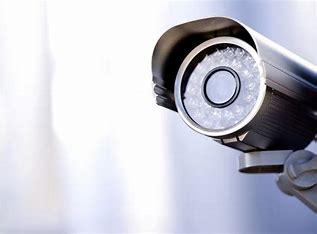Introduction
Surveillance is a critical component of public health that involves the systematic collection, analysis, interpretation, and dissemination of health-related data. It plays a crucial role in monitoring the occurrence and distribution of diseases, identifying emerging health threats, and informing public health interventions. In this article, we will explore the concept of surveillance, its types, methodologies, and its significance in safeguarding public health.
Understanding Surveillance
Surveillance, in the context of public health, refers to the ongoing and systematic collection of data on disease occurrence, risk factors, and health determinants. Its primary objective is to detect and track patterns and trends in order to prevent and control diseases effectively. Surveillance can be conducted at various levels, including local, national, and global, and it involves collaboration among healthcare providers, laboratories, public health agencies, and other stakeholders.
Types of Surveillance
- Passive Surveillance: Passive surveillance relies on the voluntary reporting of data by healthcare providers, laboratories, or other sources. It is the most common form of surveillance and is relatively simple and cost-effective. However, it may be prone to underreporting and may not capture the complete picture of disease occurrence.
- Active Surveillance: Active surveillance involves actively seeking out information on specific diseases or health conditions through regular contact with healthcare providers, laboratories, or other sources. It ensures more comprehensive and timely data collection, allowing for a better understanding of disease patterns.
- Syndromic Surveillance: Syndromic surveillance focuses on the early detection of disease outbreaks by monitoring non-specific symptoms or syndromes that may precede a definitive diagnosis. It relies on real-time data from various sources, such as emergency departments, pharmacies, and school absenteeism records, to identify unusual patterns that may indicate a public health threat.
- Sentinel Surveillance: Sentinel surveillance involves the monitoring of selected healthcare providers or institutions that serve as representative samples of the population. By collecting data from these sentinel sites, it provides an indication of the burden and trends of diseases within a specific population or geographic area.
Surveillance Methodologies
- Case-Based Surveillance: Case-based surveillance involves the collection of individual-level data on diagnosed cases of specific diseases or health conditions. It includes information such as demographic characteristics, clinical features, laboratory results, and treatment outcomes. This approach allows for a detailed analysis of disease patterns and helps in understanding risk factors and potential interventions.
- Event-Based Surveillance: Event-based surveillance focuses on detecting and monitoring public health events or incidents that may have an impact on population health. These events can include outbreaks of infectious diseases, natural disasters, environmental hazards, or other health emergencies. The aim is to rapidly identify and respond to these events to prevent further spread and mitigate their impact.
- Risk-Based Surveillance: Risk-based surveillance targets specific populations or groups that are at higher risk of developing certain diseases or health conditions. By focusing on these high-risk populations, surveillance efforts can be more targeted and resource-efficient.
Significance of Surveillance
Surveillance plays a crucial role in protecting public health in several ways:
- Early Detection and Response: Surveillance enables the early detection of disease outbreaks, emerging pathogens, or other health threats. Timely identification allows for rapid response measures, such as implementing control measures, providing treatment, and disseminating public health advisories.
- Monitoring Disease Trends: Surveillance data provides valuable information on the incidence, prevalence, and distribution of diseases. It helps identify changes in disease patterns, track trends over time, and assess the effectiveness of interventions.
- Planning and Evaluation: Surveillance data is essential for planning public health interventions, resource allocation, and policy development. It provides evidence for decision-making and helps evaluate the impact of interventions on disease control and prevention.
- International Collaboration: Surveillance plays a crucial role in global health security by facilitating collaboration and information sharing between countries. Early detection and communication of disease outbreaks or other health emergencies are essential for a coordinated and effective international response.
Conclusion
Surveillance is a vital tool in public health, enabling the monitoring, detection, and control of diseases and other health threats. Through various surveillance types and methodologies, public health authorities can gather essential data for effective decision-making, planning interventions, and protecting populations. By investing in robust surveillance systems, we can strengthen our ability to prevent, detect, and respond to health emergencies, ultimately safeguarding the well-being of individuals and communities.

